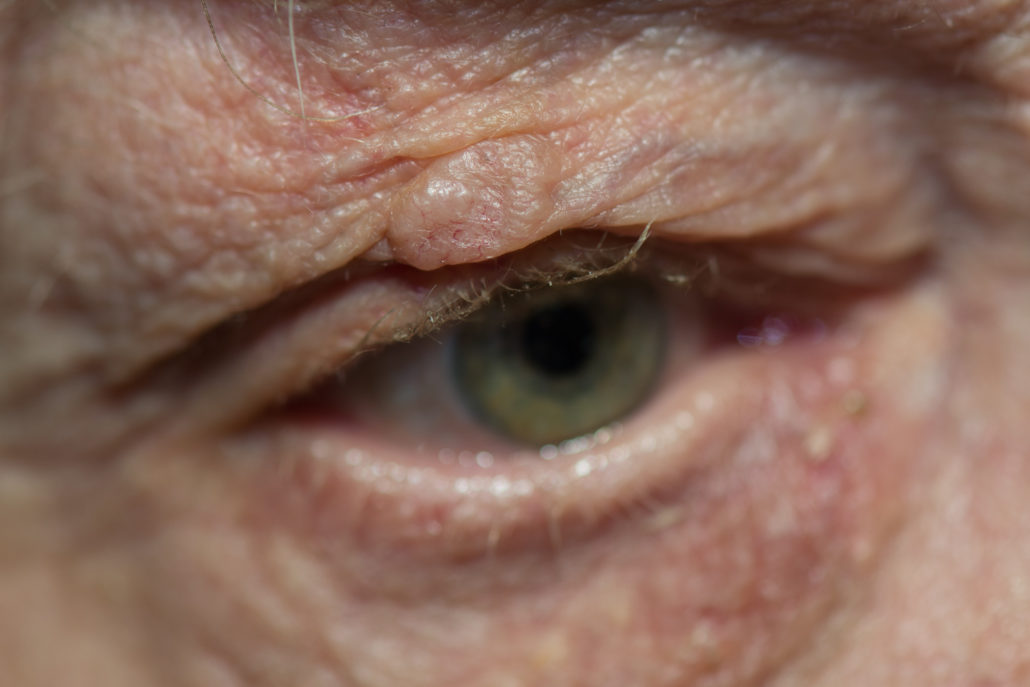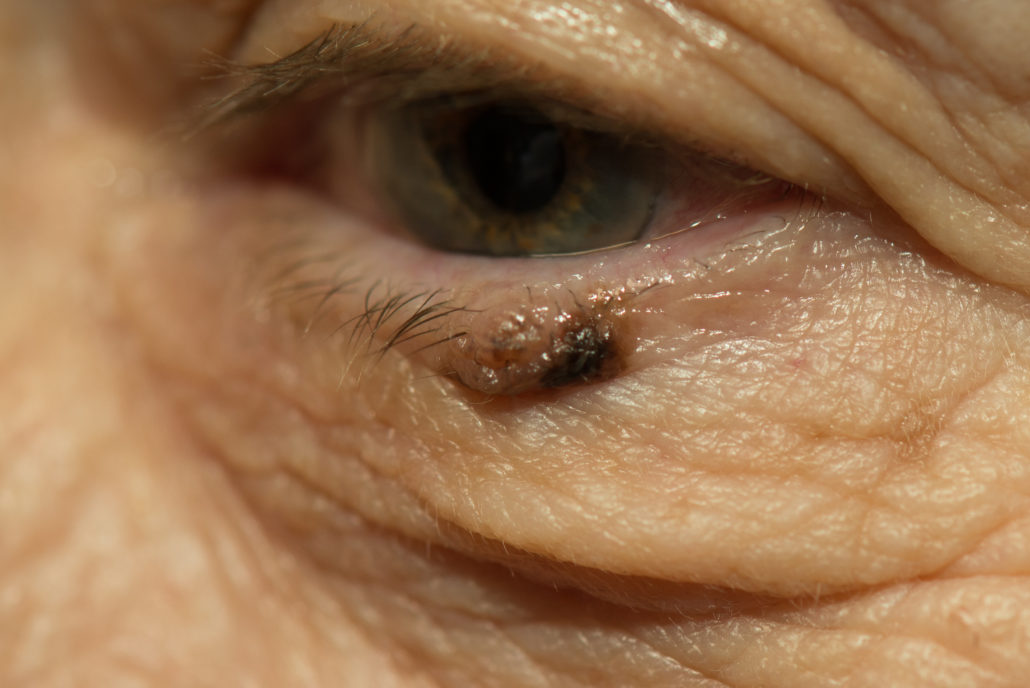Skin cancer of the eyelids is a serious concern that requires prompt attention from a skilled surgeon for both removal and reconstruction of the area, and different types of tumors require varying degrees of care.
Skin cancer of the eyelids is relatively common and several types exist. The eyelid skin is the thinnest and most sensitive skin on your body. As a result, this is often the first area on your face to show change from sun damage and aging. Unfortunately, sun damage and other environmental toxins not only cause the skin to age but can cause serious damage. The presence of a bump or growth on the eyelid that is enlarging, bleeds or ulcerates should be evaluated. This involves examination and sometimes a biopsy.

BASAL CELL CARCINOMA
Basal cell tumors represent ninety percent of eyelid tumors. These skin cancers grow slowly over months and years. They most often appear as a pearly nodule or bump that eventually starts to break down and bleed or scab up. Despite being a cancer, these tumors don’t spread to distant areas but rather just continue to grow and infiltrate the surrounding tissue. They typically can be cured by simple surgical removal followed by reconstruction of the defect left behind.

SQUAMOUS CELL CARCINOMA AND MELANOMA
These types of tumors are less common but are more aggressive and require more involved care to ensure complete treatment. Again, primary treatment involves removing the tumor, but care must also be taken to ensure the tumor has not spread anywhere, causing larger health problems. Your surgeon will help coordinate this as part of your treatment depending on the size and circumstances of the tumor at presentation.
Treatment
Skin cancer needs to be removed surgically by a skilled individual who cannot only remove the tumor but reconstruct the eyelid or area where the tumor was removed. We often perform small tumor removals in the clinic, but mostly use a surgical facility with an on site pathologist who can immediately examine the specimen to ensure the whole tumor was removed. Other times, the help of a dermatologic surgeon specializing in Mohs surgical excision will be utilized. This procedure is completed in two steps, the first in the dermatologist’s office with immediate examination of the tumor to ensure its complete removal followed by the reconstructive surgery in our operating room.
